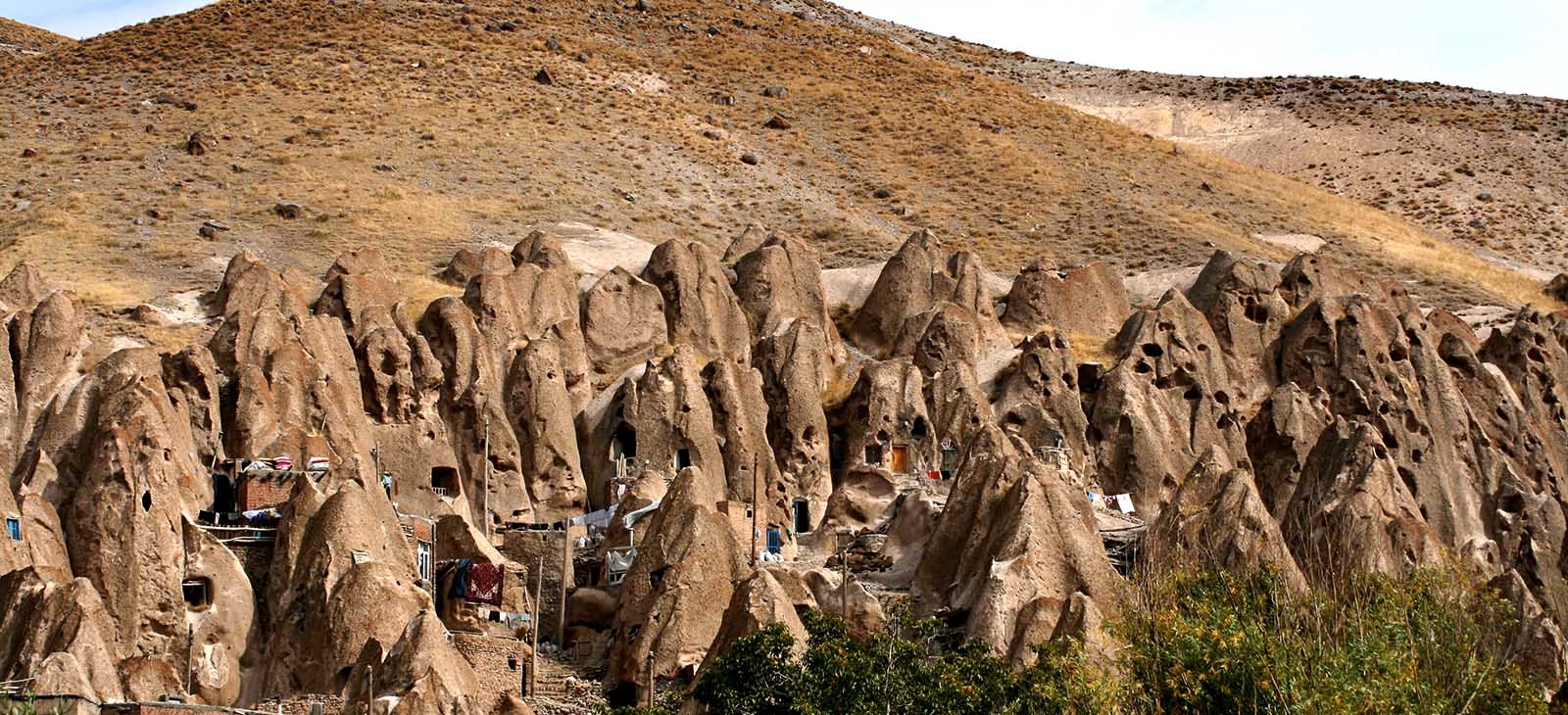Tucked away in the northwest corner of Iran is the quaint and mysterious thirteenth century village of Kandovan.
Tucked away in the northwest corner of Iran is the quaint and mysterious thirteenth century village of Kandovan. What makes Kandovan village so unique is that many of its homes have been made in caves located in cone-shaped, naturally formed compressed volcanic ash formations that make the landscape look like a gigantic termite colony. This method of dwelling makes the residents modern-age cave dwellers or troglodytes.
For more than seven centuries, people have inhabited the caves in the surrounding mountains and stone formations, building themselves a community you cannot see anywhere else in the world. Most communities have become modernized, with power and some even with running water, all while blending perfectly into the natural surroundings. Decorated with colorful carpets and fabrics, these communities support almost 170 families.
The Kandovan village has an unusual look that resembles a gigantic termite colony more than it does traditional caves. The structures were formed by ash and debris from Mount Sahand when the now-dormant volcano erupted sometime in the last 11,000 years. Over the course of thousands of years, the ash hardened and was carved out by the elements. In the surrounding region, the ash blanketed the land in a more traditional pattern.
Nature's gifts in Kandovan extend to the healing properties of its natural spring water. In particular, the waters have traditionally been used to help dissolve kidney and bladder stones. Some of the area's wild plants as also reputed to have healing and vitality-giving properties.
Houses carved inside rocks are so peculiar; you would definitely want to visit them once. Most of the houses are two to four storeys high. The present residents say that their village is around 700 years old, and was formed by people fleeing from an advancing Mongol army and who used the caves as a refugee and a place of hiding. Even after the Mongol occupation of the country came to an end, many of the refugees decided to continue living in the caves and gradually expanded their cave homes to form permanent multi-storey houses. Another legend states that eight hundred years ago a body of soldiers hid in the caves during a military campaign. Local residents say that the homes are not only strong but also unusually ‘energy efficient’: These homes require minimal supplemental heat during the long cold season and remain cool in the summer.
The combination of Kandovan's unique natural landscape, beauty, and the manner in which its inhabitants have adapted to the environment, has made Kandovan a popular destination for visitors. About 300,000 people visit the village each year (the resident population is only 670). It is only a matter of time before the local population begins to rely on tourism as a major source of income, thereby supplanting their traditional pastoral and agricultural way of life.

